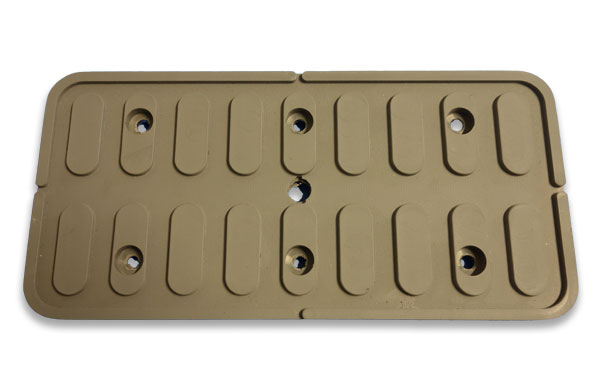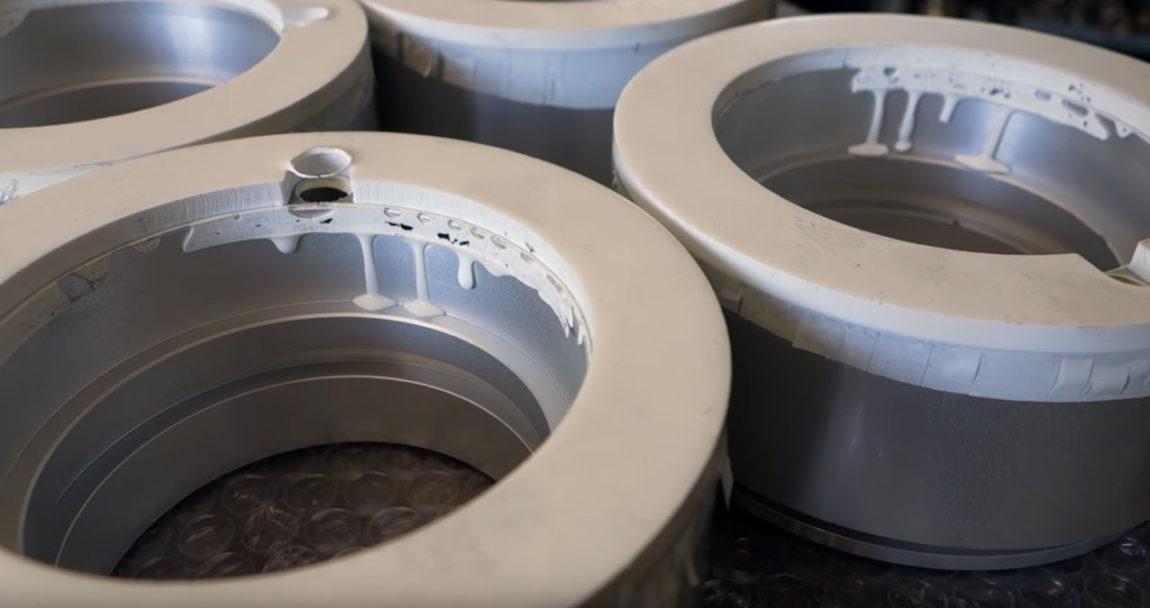Polyurethane coatings
The coatings of metal parts, rollers, cylinders and polyurethane wheels are suitable for those applications that require mechanical resistance above the norm. The polyurethane coating is able to generate parts with a high resistance and non-deformability capacity. It is an excellent solution to achieve the highest quality standards on the market with low production costs.
Production
We produce rollers, cylinders and metal parts to sample or design with polyurethane coatings to meet the ever-increasing demands of our customers. This polyurethane coating technique allows us to have several advantages.
Advantages
The advantages of the polyurethane coating are as follows:
- Resistance to abrasion, cutting and tearing
- Mechanical resistance
- High load capacity
- Excellent grip
- Good soundproofing
- Excellent elastic return
- Resistance to external factors

Features
- Polyurethane of different hardnesses from Shore A30 to Shore A95
- Antistatic polyurethane
- Polyurethane with high mechanical performance
Materials
- PUR
- EU
- AU

Processing
- Roller and cylinder
- Polyurethane coatings of supports and metal parts
- Linear, bumpy and conical adjustments
- Controlled roughness finish
- Thread and groove
- Removal, disposal and regeneration of polyurethanes
- Production of polyurethane coatings for sample and drawing
- Machining of CNC parts
Molded polyurethane
We are also able to produce cast-molded polyurethane articles and products with metal inserts
Rubber coatings
Over the years, we have been able to assimilate the expertise required to develop and research rubber compounds and rubber coatings for ever-increasing solutions and requirements for a wide range of materials.
We have more material formulations that allow us to obtain cylindrical roller wheels, wheels with hardness, color and different characteristics, and other pieces suitable for the highest requirements of our customers.
Productions
We manufacture special rolls, cylinders and special metal parts vulcanized with rubber compounds that meet a variety of strength requirements to achieve the best rubber coatings to:
- Wear and abrasion
- High and low temperatures
- Aggressive chemicals
- Oils and fats, both vegetable and animal
- Weathering
- Etc.
We also manufacture rubberized parts with:
- Atoxicity
- Slipperiness
- Elasticity
- Grip
- Non-stick
- Dielectricity
- Conductivity
We are able to produce rubber coatings such as rubber rollers with ever-improving quality standards thanks to new formulations and new tyres with improved durability and consistency that allow us to optimize and reduce operating costs.
Features
We offer different types of materials:
- Tire range on all elastomeric bases on the market
- Rubber hardness from Shore A20 to Shore A95
- Dielectric and electrically conductive silicone rubber
- Dielectric or electrically conductive rubber
- Rubber resistant to wear and abrasion
- Chemical contact rubbers for the chemical industry
- High temperature tyres (230°)
- High strength EPDM tyres
- Non-stick gum in Polytetrafluoroethylene (PTFE)
- Nitrile rubber
- Natural rubber
Processing
We offer a full range of rubber processing and rubber coating applications, some of which are listed below:
- Coating of rollers and cylinders
- Coverings of supports and metal parts (iron, steel, aluminium))
- Linear, bumpy, conical corrections
- Controlled roughness finishes
- Threads and grooves
- Rubber coating of pins and end caps
- Removal, disposal and regeneration of rubberized parts
- Realization of metal parts and rubberized to sample and drawing
- Machining of rubber parts with CNC machines
Materials
NR, IR, CR, SBR, NBR, IIR, EPM, CSM, FPM
Some rubber moulding processes
After the preparation of the parts, through the washing, sandblasting and painting, rubber is prepared through mixing and formatting. After these processes, the actual stamping process is performed.
Rubber moulding
There are several ways to print the rubber, here are some of the following:
Injection Moulding
Injection molding is used for large batches where the rubber is introduced into the machine continuously and injected through a piston inside the mold.
One of the advantages of injection molding is to have bits with very little blade, another advantage is having a much shorter machining cycle than cycles on compression machines because the rubber is preheated by the rotating screw reducing the cure time of the rubber.
Compression injection moulding.
This technology combines injection molding with compression molding.
The rubber is injected directly into the mold slightly open and when the machine is closed, starting the compression step,
the rubber reaches the mold cavities and vulcanizes.
The advantage of this process is the cost, cheaper, since no injection channels are produced while a disadvantage can only be used with heights not exceeding 1 cm.
Compression moulding
Compression molding is a technology used to produce medium, small series or samples. Cycles are longer than injections because the rubber is not preheated.
In this case excessive deals are minimized
thanks to the rubber formatting.
Transfer moulding.
The mold is closed and the elastomer is forced into the cavities by a piston through a feed channel.
The molds are more complex than those of a simple compression because they must be provided with channels for feeding the compound, where the pistons through mechanical friction heat the mixture.
One advantage is having shorter cycles, while one of the disadvantages is that the blend, due to the pressure of the piston, can drag the adhesive away.
 Italian
Italian English
English
